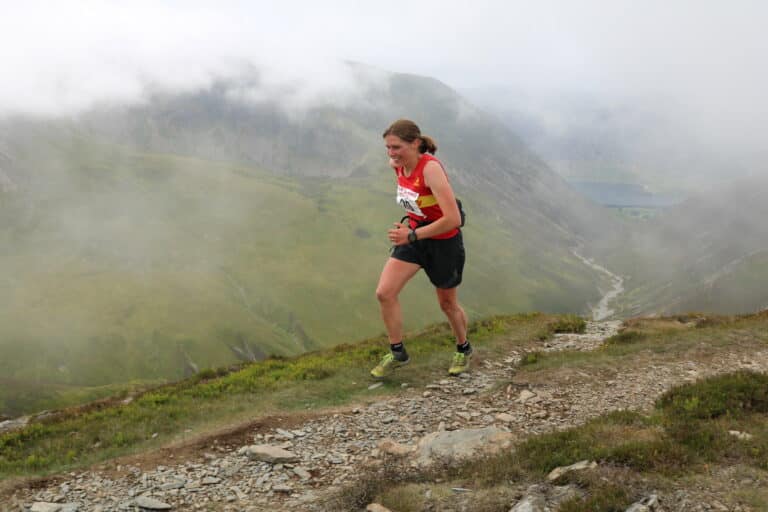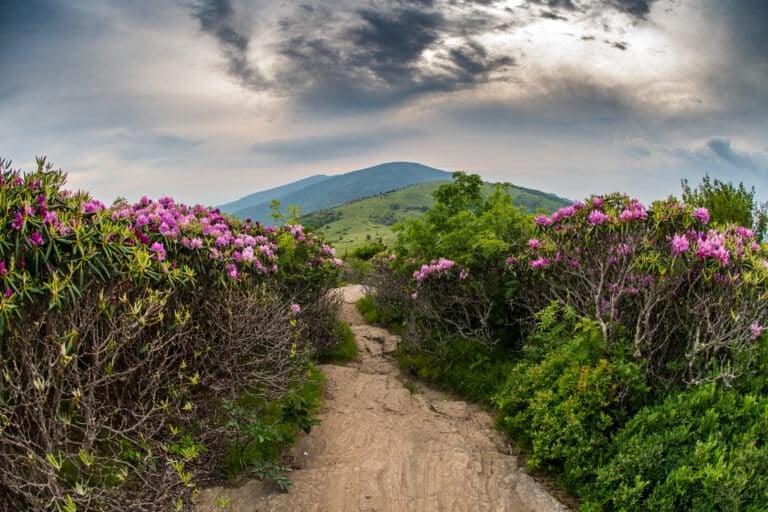Here are 12 snowless adventures that will keep your winter wanderlust satisfied till it’s snowing or springtime.
Lukewarm
50°F – 60°F
Send sandstone.
Now that the swarms of fall break tourists have retreated back to their respective climbing gyms, the crags are blissfully quiet. For the truly dedicated climber, winter is one of the best seasons for climbing in the Southeast. Active bodies stay cooler, feet sweat less, and rubber soles grip better. Walls that are normally too exposed and too hot to climb in the summer become the perfect spots to post up for an afternoon of winter cragging.
Where to go: Chattanooga, Tenn., has it all: classic cracks, plentiful boulderfields, climber-friendly hostels like the The Crash Pad, and a youthful downtown scene to boot. Tennessee Wall (trad), Sunset Park (trad), Foster Falls (sport), and Stone Fort (boulder) have the highest concentration of quality routes close to town. For a truly unique bouldering experience, take your chances with the weather and head north to Summersville Lake, a popular sport climbing destination outside of Fayetteville, W.Va. In the wintertime, the lake level drops and exposes huge swaths of shoreline littered with boulders.
Grind gravel.
Swap out the fat tires this winter and get on board with one of the fastest growing sectors of the bike industry, gravel riding. Over the past five years, gravel grinding has matured from a quiet niche to a respected cycling discipline unto its own. Why? Because churning out long days in the saddle over mixed terrain taps into the very core of what it means to be human—adventure, adversity, accomplishment. It’s hard not to feel satisfied after covering some major ground through sheer will and pedal power.
Where to go: Whip out a map and connect as many Forest Service roads as you can for a DIY adventure. For those just starting out, Ride With GPS has a number of routes that trace some of the area’s best gravel grinding races like the Stokesville Strade (Virginia) and the Bootlegger 100 (North Carolina), both of which take place in the spring.
Lap rivers.
While paddlers out west have long hung up their dry suits for ski pants, boaters here are just starting to ramp things up. Though most people associate springtime with rain, the winter months of December and January can bring just as much rainfall. In Brevard, N.C., for example, home of the rowdy Horsepasture River (class V), December (6.38 inches) is the third wettest month after March (6.5 inches) and January (6.42 inches).
Where to go: Even though the recreational release season is over, dam-controlled rivers like the Russell Fork in Kentucky can still be expected to flow. Other regional rivers that regularly run in the wintertime include the Watauga River near Boone, N.C., the Top Yough outside of Friendsville, Md., and Wilson Creek near Morganton, N.C. These sections of river are all less than five miles in length, so lap them till the sun goes down for a full day of whitewater.
Catch the giants.
For years, seasoned “catmen” have trolled river channels and lakes during the winter months in search of mammoth catfish. Until recently, these dutiful few had the water all to themselves, but it’s now widely regarded in the angling community that late fall and winter can provide some prime conditions for landing blue, channel, and white cats. Follow schools of shad and look for deep holes in the main river channel during the day or shallow flats at night.
Where to go: Virginia’s James River is home to some really big blue cats ranging anywhere from 30 to 50 pounds in size. But for the really really big cats, journey south to Tennessee’s Lake Barkley, where the state-record blue catfish (caught in 1998) weighed in at 112 pounds, just 4 pounds shy of the current world record. Kentucky Lake, which is just west of Lake Barkley, is also a premier catfishing destination.
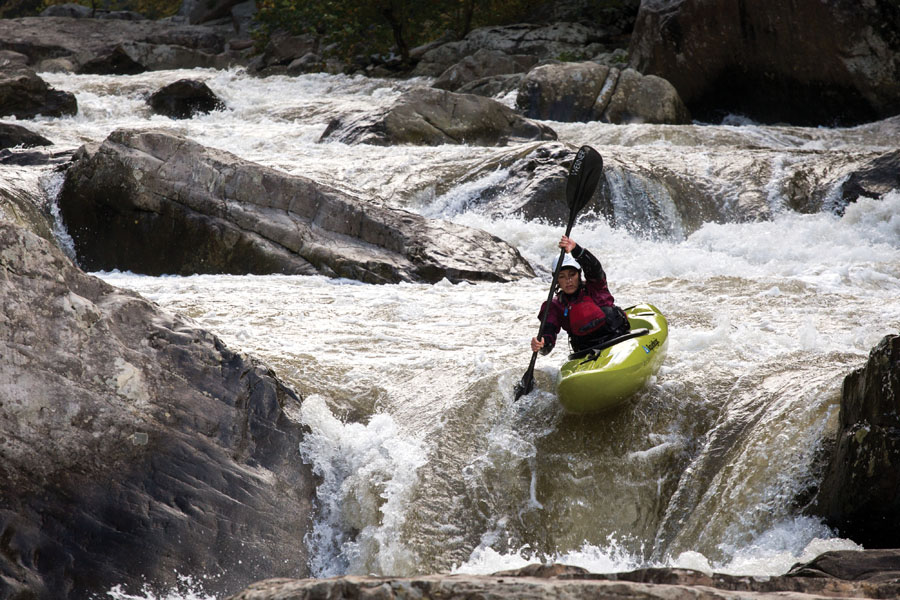
[nextpage title=”Read on!”]
Cool
40°F – 50°F
Do a cold dip.
Admittedly, taking a plunge in freezing cold water in the dead of winter sounds counterintuitive (if not downright ludicrous). And despite the numerous health benefits claimed by ardent dippers—a boost to the immune system, improvements to cardiovascular circulation, and an increased metabolism, just to name a few—cold dips shouldn’t be considered a magical cure-all, especially for those with a family history of heart conditions. That’s not to say that cold dips are unsafe. People have been “winter bathing” since the famed publisher Bernarr MacFadden founded Coney Island Polar Bear Club in 1903. If nothing else, cold-water submersion is certainly refreshing and invigorating. When done with a crowd of half-naked or costumed strangers, the experience can be entirely too much fun and strangely unifying. Just be sure to check with your doctor before taking the plunge, and no cannonballs.
Where to go: Next month, thousands of people will start the New Year off with a polar plunge. Lake Lure and Atlantic Beach, N.C., organize their cold dips on the first of the year, while other events like WinterFest at Chetola Resort will host a polar plunge later in January. If you need a good reason to freeze, Special Olympics Virginia also puts on its Polar Plunge Festival series starting December 2, 2017, in Charlottesville, Va., and continuing throughout 2018 in Radford, Richmond, Dumfries, and Virginia Beach.
Plan a backpacking trip. Hardcore winter camping—the kind where you’re post-holing for miles in knee-deep snow, wiping your butt with snowballs, and putting on frozen boots in the morning—is not for everyone (or really anyone). It’s what we call “type II fun” : miserable in the moment yet somehow quixotic when the suffering is (way far) behind you. Have some “type I fun” instead this winter by taking a backpacking trip in tolerably cool weather. You’ll be moving enough to stay warm during the day and it’s cold enough to justify building a campfire and sipping on whiskey at night.
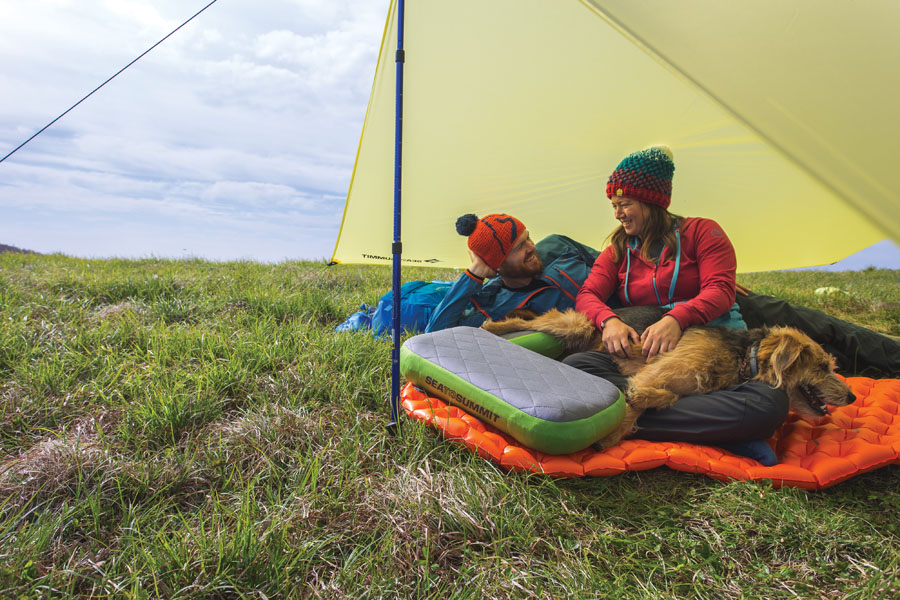
Where to go: If magical evergreen forests are what you’re after, head to the Cranberry Wilderness near Richwood, W.Va. Because it’s a wilderness area, you won’t find much in the way of trail signage and the trails themselves will likely be overgrown or barricaded in spider webs. Bring hard maps and extra socks. If big mountain views are more to your liking, head south to Panthertown Valley in North Carolina’s Nantahala National Forest. The 6,300-acre recreation area is pockmarked with massive granite walls and equally stunning waterfalls, some of which form the headwaters of the Tuckasegee River.
Head to the coast.
Maybe it feels like a copout to head to the coast when the weather turns sour, but hey, if birds can do it, so can we. With the beachgoing madness long in the rearview mirror, oceanfront lodging can actually be affordable and the atmosphere quite pleasant. Though much of the beachfront in the Southeast and Mid-Atlantic is covered up in boardwalks and development, there are many miles of protected coastline to remind us of how special and important our beaches are.
Where to go: We like South Carolina for its diverse landscape: estuaries, sand dunes, freshwater wetlands, bottomland hardwood swamps, longleaf pine forests. Explore Cape Romain National Wildlife Refuge by boat and watch for sightings of alligators bathing and wintering black skimmers feasting. Boneyard Beach on Bulls Island is best seen at sunrise, where sun bleached remnants of oak trees rise impossibly from the sand like a forest of skeletons.
[nextpage title=”Read on!”]
Cold
32°F – 40°F
Hit the trail.
As the mercury drops on the thermometer and daylight fades faster, a quick midday trail run can be a godsend, even if you don’t necessarily like running. Make time, at least a half hour, to get outside and burn some steam. Even if it’s cold and raining, it won’t take long to get the blood pumping.
Where to go: Anywhere! Hopefully you live in an active community like Asheville, N.C., or Roanoke, Va., where greenways and trail systems (like Bent Creek Experimental Forest outside of Asheville or Mill Mountain Park in Roanoke) are just minutes from downtown. If you can’t get motivated on your own, find a friend. Both of these cities have well established running scenes that regularly host group runs nearly every night of the week. Fleet Feet Sports has locations in both Asheville and Roanoke, and their weekly pub runs are a fun way to keep moving.
Give back.
If you’re anything like us, we know you’ve put some wear and tear on your local trails and rivers in the past year. Why not spend your next Saturday giving back to those places you love so dearly? As national parks, state parks, and the Forest Service continue to struggle with funding, volunteer trail maintenance is needed now more than ever. Step up, give back, and appreciate the hard work that goes into creating and maintaining spaces to go outside and play.
Where to go: Start by contacting your local trail or paddling club. In Virginia’s Shenandoah Valley, for example, the Shenandoah Valley Bicycle Coalition regularly organizes trail maintenance days in the George Washington and Jefferson National Forests. Down in Knoxville, Tenn., the Appalachian Mountain Bike Club logs countless hours of volunteer labor on the city’s urban trail system.
Search for surf.
You don’t have to road trip to the beach to get pitted. Over the past few years, river surfing—that is, surfing on river features with a surfboard or standup paddleboard—has spiked in popularity out west. The good news is that the Southeast has tons of river surfing potential. The bad news is that you usually have to wait till it’s freezing cold and/or raining for the levels to come in. Bring a 3/2mm wetsuit. You’ll need it.
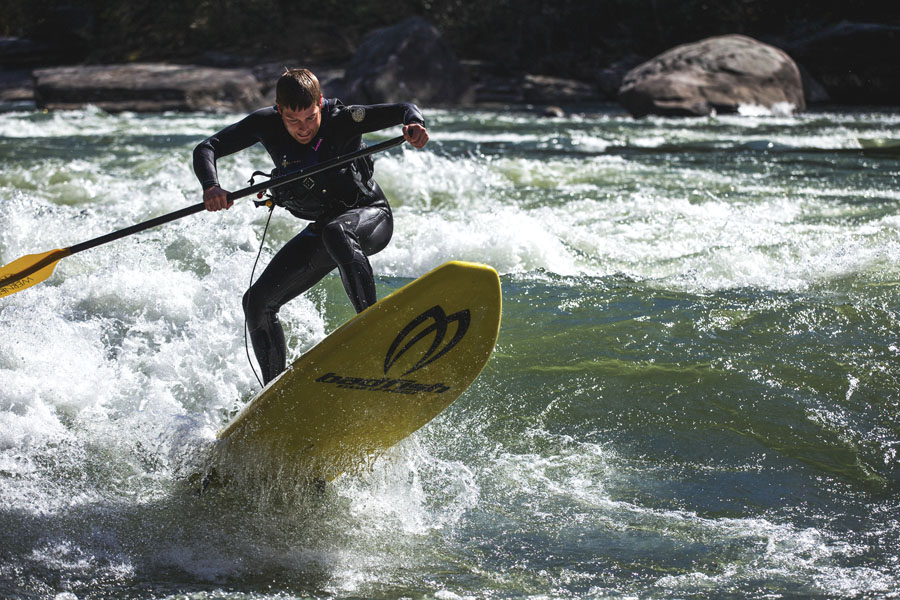
Where to go: Fayetteville, W.Va., has always been a hub for whitewater enthusiasts, mostly raft guides and kayakers. But now, standup paddleboarders rival playboaters in numbers when the surf is in. Those who are new to the sport should take a day and hike into the Lower Gauley River for some eddy service surf action at Diagonal Ledges. For the more experienced surfer, head to the New River Dries for high-volume, big (I’m talking terrifyingly big) waves.
[nextpage title=”Read on!”]
Freezing
<32°F
Go forest bathing.
This used to be called going for a hike, but apparently even those of us who consider ourselves “outdoorsy” were too tuned in to Instagram and too tuned out of nature to fully absorb our surroundings. Enter forest bathing, which does not involve any bathing or water whatsoever. Forest bathing is less of a hike and more of a mindful, meditative wandering. The goal is not to walk far or to even have a destination in mind. By simply being present and paying attention to all of nature’s sounds, smells, sights, and textures, studies show that forest bathers can significantly reduce blood pressure and stress hormones.
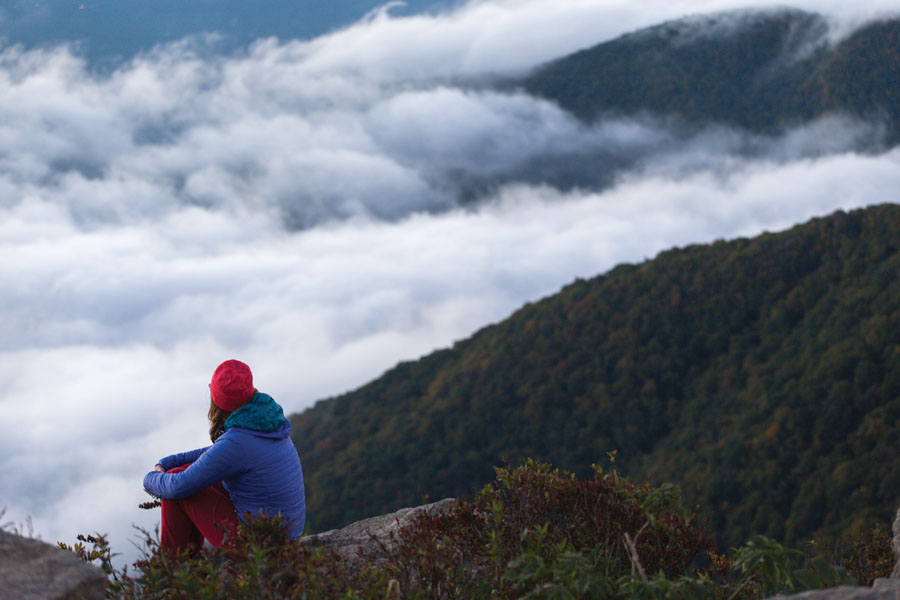
Where to go: The beauty of forest bathing is that it literally can be done anywhere there’s a cluster of trees. You don’t need a trail. You don’t need a map. You don’t need to plan a weekend getaway to Great Smoky Mountains National Park, either. Find a moderately forested city park close to where you live or work and just be. Be and breathe.
Try ice-skating.
This is such an easy and affordable way to get the family out, even when it’s bitterly cold. Most skating rinks charge $15 or less for admission and skate rental, with “family of four” packages offering even more of a discount. If you’re an adult and you’ve never tried ice-skating before, this is the year to do it, if not for yourself than for the spirit of the PyeongChang 2018 Winter Olympics. You might not be landing seven triple jumps like Michelle Kwan, but at least you’ll have an appreciation for the sport’s graceful athletes.
Where to go: Outdoor skating rinks are relatively common up and down the eastern seaboard, so you shouldn’t have to travel far to find one. Wisp Resort’s ice rink at Mountain Park is plenty big at 50’ x 85’ with a bonfire area to keep the kids cozy. Even urban dwellers in most major cities can hit the ice. Holiday on Ice is located smack downtown (or should we say uptown?) in Charlotte, N.C.
BONUS ADVENTURE?!?
Take a drinking tour.
When in doubt, rent a bus (or bribe one of your friends to DD) and drink your winter blues away. With new breweries, cideries, distilleries, and wineries seemingly popping up overnight, you have plenty of destinations to choose from.
Where to go: Central Virginia and Western North Carolina are hands down leading the charge when it comes to quantity and quality of craft beverage facilities. Check out Cville Hop On Tours, which shuttles visitors up and down Nelson 151 and the Brew Ridge Trail, home to six Virginian breweries, five wineries, a cidery, and now a distillery. Similarly, Asheville Brewery Tours escorts out-of-towners by passenger van on either a three- or four-stop tour of the city’s many breweries and cideries.

